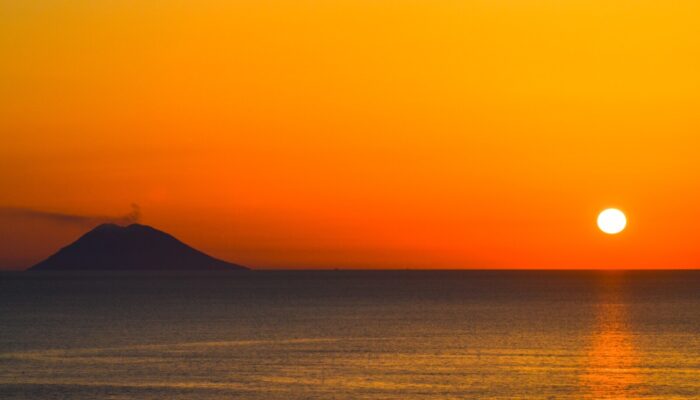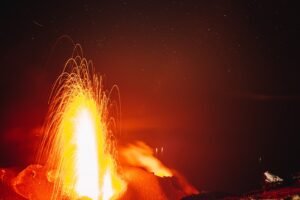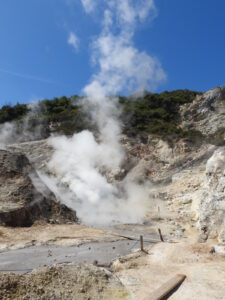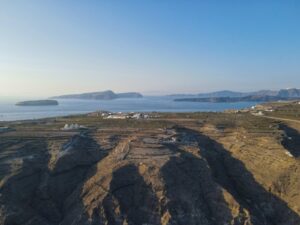
Summer time can be stressful – you have plenty of things to do at work but at the same time you’re thinking about your next vacation all the time. This is at least how I was feeling, combined with some curiosity, I asked chatGPT to write a blog post about vacation destinations for geologist around volcanoes in Europe – here are the results, I hope you get inspired:
Calling all geology enthusiasts and adventure seekers! If you’re on the lookout for a vacation that combines breathtaking landscapes, scientific wonders, and the thrill of volcanic activity, then look no further. Europe is home to a treasure trove of volcanic marvels that will leave you spellbound. In this blog post, we’ll take you on a journey to Stromboli, Cumbre Vieja, Campi Flegrei, Iceland, and Santorini. So pack your geologist’s toolkit and get ready for an awe-inspiring exploration of Europe’s most captivating volcanic destinations!
- Stromboli – The Lighthouse of the Mediterranean: Our adventure begins on the enchanting island of Stromboli, off the coast of Sicily, Italy. This stratovolcano is known for its almost continuous explosive eruptions, earning it the nickname “Lighthouse of the Mediterranean.” Stromboli showcases a classic volcanic cone shape, with layers of ash, cinder, and lava. As you hike to the summit, you’ll witness Strombolian eruptions, characterized by regular explosive bursts of gas and lava fragments. These eruptions provide valuable insights into volcanic behavior and the dynamics of explosive activity.
- Cumbre Vieja – A Glimpse into Earth’s Dynamic Nature: Next, we head to the magnificent Canary Islands to witness the volcanic masterpiece of Cumbre Vieja. This active shield volcano on the island of La Palma is part of the larger volcanic system that formed the entire Canary archipelago. Cumbre Vieja offers a fascinating geological record, displaying different types of volcanic activity, including effusive eruptions and explosive eruptions. The eruptions in Cumbre Vieja are often associated with the opening of new vents and the creation of lava flows, which are invaluable for studying volcanic hazards and landform development.
- Campi Flegrei – Exploring the Phlegraean Fields: Our next stop takes us to the Phlegraean Fields, just west of Naples, Italy. Campi Flegrei’s caldera was formed during a colossal eruption thousands of years ago, known as the Campanian Ignimbrite eruption. Although Campi Flegrei is currently in a quiescent state, it has experienced periods of volcanic unrest throughout history. Ground uplift, increased seismic activity, and gas emissions are indicators of the dynamic nature of this volcanic system. Scientists closely monitor Campi Flegrei due to its potential for future eruptions. The Solfatara crater within Campi Flegrei hosts fumaroles emitting gases and steam, creating a surreal landscape. The area also features geothermal fields and hot springs, providing insights into geothermal energy potential and the interaction between volcanic and hydrothermal systems.
- Iceland – The Land of Fire and Ice: No geological adventure would be complete without a visit to Iceland, a true paradise for geologists. Iceland sits atop the Mid-Atlantic Ridge, where the North American and Eurasian tectonic plates diverge. The country showcases a wide range of volcanic features, including shield volcanoes, stratovolcanoes, and volcanic rift zones. Exploring Iceland offers a unique opportunity to witness the interactions between volcanic activity, glacial processes, and geothermal phenomena. Don’t miss the chance to visit Thingvellir National Park, where you can walk along the Mid-Atlantic Ridge and witness the geological forces at work.
- Santorini – The Enchanting Caldera: Our final destination takes us to the sun-soaked Greek island of Santorini, where ancient myths meet volcanic beauty. Santorini is a volcanic archipelago formed by a massive volcanic eruption around 3,600 years ago. This eruption, known as the Minoan eruption, led to the collapse of the central part of the volcano and the creation of the famous caldera. The island’s iconic cliffside villages, such as Oia and Fira, offer stunning views of the caldera and its dramatic volcanic cliffs. Santorini also provides a unique opportunity to witness the geological processes of island formation and the erosional effects of waves and volcanic activity.
Whether you’re a professional geologist or simply fascinated by the Earth’s dynamic forces, Europe’s volcanic wonders offer an unparalleled vacation experience. From the explosive eruptions of Stromboli to the geothermal marvels of Iceland, each destination presents a unique opportunity to witness the raw power and beauty of our planet. So pack your geologist’s toolkit, embrace the thrill of adventure, and embark on a journey that will inspire and ignite your passion for all things geological. Happy exploring!





